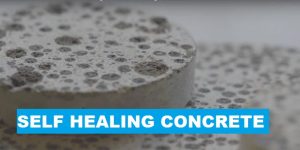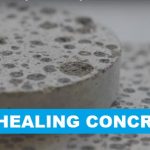Generally, you need only four (4) key ingredients (cement, Fine Aggregate, Coarse Aggregate, and Water) to make a reasonably good and workable concrete. However, due to rapid development; there has been increased demand for concrete with enhanced or modified properties, while also optimizing the cost.
These demands come in the form High Performance/Strength Concrete, Modified Setting-Time, Improved/Sustained Workability, Air-Entrained Concrete, Lightweight Concrete, etc. Therefore, in order to fulfil all these special requirements; we started using concrete admixtures. Anything that is added to concrete (other than cement, sand, aggregate, water) to improve its properties is called admixtures; and this can be synthetic, chemical, natural, etc.
The concrete admixtures can be divided into two main groups; namely the general purpose admixtures and the special purpose admixtures. The general purpose admixtures are used to improve or alter the basic properties of concrete, which are related to fresh and mechanical properties. On the other hand, the specialty admixtures are used for very specific applications, such as lightweight concrete, colored concrete, corrosion prevention, etc.
There are four (4) main types of general purpose concrete admixture, namely;
- Water-Reducing Admixtures
- Accelerating Admixtures (Accelerator)
- Retarding Admixtures (Retarder)
- Air-Entraining Admixtures
1. Water-Reducing Concrete Admixtures
As the name suggest, this type of concrete admixture is used to reduce the mixing water in the concrete. Water has two functions in concrete mix; (1) is activate the hydration process of the cement, and (2) for the workability purpose to ease the place-ability of the concrete. Therefore, by using water-reducing admixtures, we would be able to cut down the excess water that is solely added for workability purpose.
Besides that, water-reducing admixtures are also used when the concrete mix is blended with mineral admixtures (fly ash, POFA, etc.). Mineral type concrete admixtures are generally very fine, and sometimes finer than cement itself. When these come in contact with water during mixing it will start to lump together, and this affects the workability of the overall concrete mix as this reduces the viscosity.
We cannot keep on adding water to bring the workability to desired level, as it will affect the strength development and concrete durability. This is where we start introducing the water-reducing admixtures to disperse cement + mineral admixtures mixture.
Water-reducing concrete admixtures can be categorized into three (3) types;
Normal Water reducer – this is the basic type and can be bought over the shelf from hardware stores. Typically, this would allow for reduction of water up to about 5%
Mid-Range Water Reducer – This would allow water reduction around 10 to 15 percent. The reduction should be kept in this range, and any adventurous effort to increase the dosage beyond recommended level will result in undesirable outcome to the concrete mix. Overdosing can affect the setting-time, air-content, as well as causing segregation, rapid hardening, etc.
High-Range Water Reducer (HRWR) – This is relatively new type of water reducer and usually will be custom made to suit specific requirement and applications. This admixture can give water reduction as high as 40 percent. HRWR is also commonly used in the making of Self-Compacting or Self-Levelling Concrete. It is also very common to see the use of HRWR in the manufacturing of pre-cast concrete products as it can provide good workable concrete with very low amount of water.
2. Accelerating Concrete Admixtures
Opposite to retarding concrete admixtures; this admixture will accelerate the concrete/cement hydration. Usually accelerator is used either to increase the rate of hydration or to speed-up the setting time.
Increase in Rate Hydration can:
- Provide higher early strength
- Faster removal of formwork thus speeding up the overall construction work
- Reduced curing period
- Able to put structure in service sooner
- Faster mould turnaround time in pre-cast concrete industry thus increasing the productivity.
Shorten Setting Time:
- Can smoothen and finish the surface earlier
- Can minimize the hydraulic pressure (from the wet concrete) on the formwork especially at the bottom of the formwork/moulds.
- Can minimize or reduce the leaking of concrete paste from the formwork/mould due to internal pressure.
With the technology of accelerating admixtures, many applications with concrete become easy/possible, which previously was a difficult and challenging task. One of application that highly benefited with this admixture is the underwater concreting. The admixture also widely used in cold weather concreting to accelerate the setting, as low temperature tends to delay the setting time of the concrete.
The most common accelerator that used in concrete industry is the calcium chloride, which typically used at rate of about 2 percent at tops. At this dosage, the setting time can be reduced by one-third compared to normal mix.
However, be cautious when the concrete will be in contact with environment with sulphate or potentially will be subjected to alkali-aggregate reaction; because calcium chloride has tendency to lower the concretes resistance to sulphate attack.
3. Retarding Concrete Admixtures (Retarder)
Originated from the word retard which simply means delay or hold back in terms of progress or development; and that is what exactly this admixture does.
This type concrete admixtures are used in concrete mix when there is need to delay the setting (hardening) of the concrete. Concrete generally need to be workable during the whole concreting stage. However, sometimes due to accelerated hydration (due to high temperature) the water would be used up by the cement, and leaving nothing for workability. It is important to maintain constant workability of the concrete throughout the concreting stage in order to avoid cold joints between different loads of concrete.
Another reason for water loss is due to high surrounding temperature, low humidity, and wind, which will cause significant evaporation of water in the concrete. This would make concrete surface to dry too fast and eventually leads to cracking.
Therefore, by using retarding concrete admixtures, the reaction between cement and water could be delayed. The actual setting-time delay can be adjusted according to the time needed to place and finish the concreting job.
There are many types of branded retarder readily available in the market. However, the easiest and simplest form of retarder that you can use is the regular sugar. Even the soft drinks like coca cola can be used as retarder in concrete mix, but please take into account the moisture contribution from the use of soft drinks as retarder.
4. Air-Entraining Admixtures
A properly calculated and incorporated air in the concrete would be able to,
- Improve the workability of the concrete
- Improve the place-ability, thus making easier to place and finish the concrete
- Increase durability
- Better resistance to frost action
- Reduction in the bleeding
- Reduction in segregations
The air voids in concrete can be categorized into two types;
- Entrained Air – these are intentionally placed air bubbles in the concrete by using air-entraining admixtures.
- Entrapped Air – this is air that forms in the concrete due poor compactions. In fact these are not air bubbles, it is actually air pocked due to voids created out sub-standard workmanship.
While entrained air are placed intentionally to improve certain properties of concrete as mention above; the entrapped air (void) on the other hand are usually source of weakness in the concrete. These voids have tendency to affect the long-term durability and strength of the concrete.
The benefits of air-entrained concrete are primarily on the workability and durability, and not towards the strength improvement. In fact, the presence of air bubbles will affect the strength negatively. The extent of strength reduction depends on the amount air bubbles introduced. however, the air content also affects the strength of the concrete.
The optimum volume of entrained air depends on:
Type of air-entraining agent – there is no one set rule or brand of air-entraining agent that will give ultimate benefits of entrained air concrete with optimized volume. Each type of air-entraining agent will give different result. Therefore, it is important to get right recommendations from the original admixture manufacturer. On top that, it is very important to conduct a small-scale trial mix before using the admixture in bigger volume.
Water-cement ratio – concrete with too low water-cement ratio won’t be able to produce enough bubble. Concrete with too high water-cement ratio will produce large amount of loose air which will eventually break-off before the concrete can be placed. A proper trial-mix will help to decide optimum water-cement ratio.
Compaction – the air will be greatly reduced with the increased degree of compaction and vibrations.
Mixing time – at initial mixing stage, the air bubble tends to increase with the mixing time. This is due to the stirring effect that creates bubbles; however, continuous mixing will eventually reduce the bubble formation.
Temperature – the air bubbles will reduce with the rise in concrete temperature. The temperature can be due heat of hydration or surrounding temperature.
Summary
These are not exhaustive list of admixtures for concrete. There are many other type of specialty concrete admixtures and mineral concrete admixtures that can be used in concrete. Hope you benefit from this information on general purpose admixture for concrete; if you wish to add more information to this article, do reach out to us by commenting below or through contact us page.










